Hiking trips
The right hiking equipment can make your hiking holiday a lot more beautiful. It is important that the hiking equipment should be lightweight and have a low packing volume. Any excess weight not only affects the conditional reserves, but obviously also restricts general agility while hiking.
You will also receive this information in printed form when you book a Eurotrek hiking trip.
Just let us know if you need more information on the above points - we will be glad to advise you!
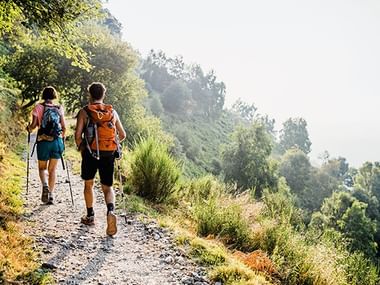

We will be happy to advise you if you need further information on any of the recommendations. Good preparation is the most important thing for a successful hiking trip!
Ines Spreeuwers

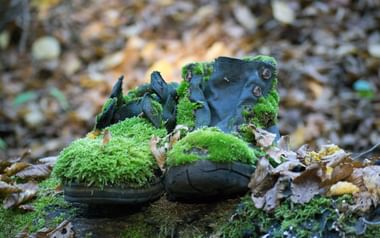
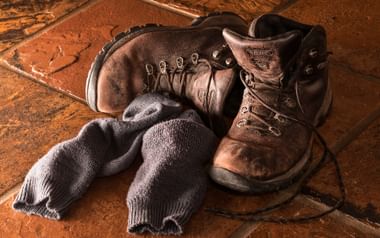
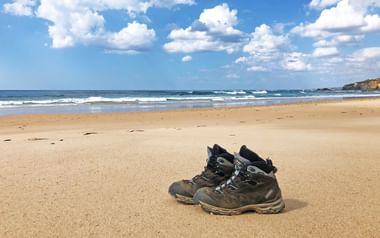
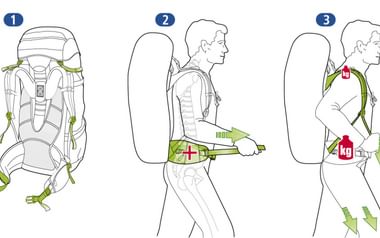

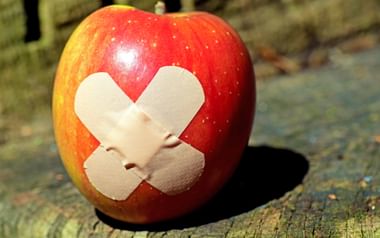
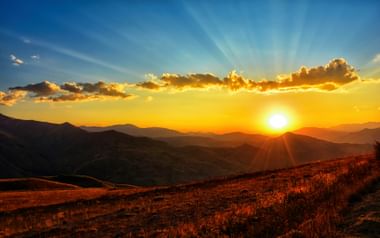


Clothing worn for hiking must meet the following conditions:
it must protect against weather conditions, keep the body warm, transport moisture away from the skin and, at the same time, be as light as possible and take up less space. For this reason, the "onion principle” is generally used here; various layers of clothing are used, which when combined in a specific way, can meet these requirements.
Basically you should use the following clothing items:
- The 1st layer, which is worn directly on the skin. This layer keeps the skin dry, thus preventing you from freezing due to sweat on the skin. Use underclothing made of wool (for e.g., Merino), synthetic materials or mixed fabrics.
- The 2nd layer is for insulation. It is important that this layer transports moisture outside. Materials such as fleece, Polartec, Primaloft or down should be used for this layer. Windstopper and SoftShell can be used as well because they are not completely waterproof.
- The next layer protects against the wind and rain. Suitable materials are either coated with or made of wind-resistant and water-resistant materials. This layer is usually the most expensive one as very high-quality materials are used. This layer should also transport moisture to the outside through incorporated membranes or zips.
It is important that every layer meets the specified requirements. This clothing chain is only as strong as its weakest link: the most expensive rain jacket is of no use if it does not allow sweat to pass through it.
TIP!
Ensure a balanced combination of your clothing items.

Hiking shoes should meet your individual requirements. Trekking shoes are slightly lighter than sturdy mountain boots and offer better wearing comfort due to their softer sole. Trekking shoes can usually be used for Eurotrek tours of the difficulty level "hiking". However, keep in mind that you may have to cover long stretches during the day at this level too. You must therefore be able to walk for several hours in your trekking shoes.
Mountain boots should be used for tours starting from the level "mountain hiking". They support the foot because of the high shaft and are very comfortable even on stony ground because of the hard sole. The choice between Gore-Tex or leather is often a matter of taste. Gore-Tex shoes are more breathable while leather mountain boots are often more comfortable to wear.
TIP!
All shoes need good care.

- Remove the insole and dry your shoes with newspaper. Especially leather shoes must not be dried using external heat sources such as an oven because the leather gets damaged and becomes brittle.
- Clean the shoes with a damp cloth or a brush. For stubborn dirt, we recommend that you remove the laces before cleaning.
- Water protection/leather shoes
The surface of leather shoes can be proofed with wax or a silicone-based agent. However, note that leather shoes become darker when proofed with wax. Alternatively, you can also use liquid proofing agents. They preserve the colour but do not protect the shoes from water so well.Never use greasy care products for leather shoes. These make the leather swell, causing the shoe to lose its breathability. - Water protection/Gore-Tex
Proofing primarily protects the shoe against water and dirt. Gore-Tex shoes with clogged pores lose their breathability. Use a water-based spray to clean your shoes.
TIP!
To know how to take care of different shoes and materials, it could be useful to consult the dealer briefly. Wrong care can permanently damage a shoe.
Telescopic poles are an important part of basic hiking equipment as they help protect the joints and provide more safety in the terrain.
Adjustment of the optimal pole height is a matter of taste. As a rule of thumb, the upper and lower arms should form an angle of 90 degrees, so that the upper arm points vertically downwards to a straight surface when the pole is stationary.
For longer gradients, adjust the poles slightly shorter to increase power transmission.
When descending the mountains you should make sure that the poles are long enough so that you can keep your back upright.
Nordic walking poles are not suitable for hiking tours as their length cannot be adjusted.
TIP!
A good pole can provide a lot of physical comfort during your hiking tour and is a rewarding investment.

Prevention
- When buying shoes, make sure that in the front, the toes are about 1 cm away from the inside wall of the shoe. Feet expand due to the strain of walking and become slightly longer. The shoes must be tight in the heel area.
- Socks with a good fit and appropriate padding are also important. Modern hiking socks are made of a mix of synthetic material and wool. The wool provides cushioning, while the synthetic elements keep the socks in shape and provide a stable hold.
- Break in your new shoes carefully by wearing them during short walks. Some parts of the shoe need time and are softened by the weight. Light moistening before wearing the shoes accelerates this process. If you notice any problem areas, you can also apply tape or blister plaster as a preventive measure.
- A cobbler can often easily fix poorly finished parts of a shoe.
Treatment
If a blister forms on your foot during a hike, you should react quickly and observe the following:
- Use a special blister plaster as soon as you feel that there may be blisters in a spot. The faster you respond, the better.
- Make sure that you place the blister plaster on the right spot. A badly placed blister plaster can aggravate the situation.
- Good hygiene is extremely important when treating blisters. Make sure you use a clean plaster.
- If you want to puncture the blister, make just one small puncture using a disinfected needle and gently squeeze the fluid out of the blister.
- Prevent the skin from separating from the blister. Open blisters are easily inflamed and heal slower.

There are a few basic things you should keep in mind when packing a rucksack:
- Ensure that the centre of gravity is as close to the body as possible.
- Heavy items such as drinks should therefore be packed near the shoulders.
- Place lightweight items such as a jacket in the lower part of the rucksack.
- Smaller items such as your camera can be packed in the top pocket for easy access.
- Packing bags are useful in organising your things. Waterproof bags cost slightly more, but are definitely recommended.
Take a quick look at your route book before you start packing. For flat paths and well-developed hiking trails, the centre of gravity of the load should be slightly higher. This helps you stay flexible and mobile and walk comfortably.
For difficult terrains, you should pack heavy loads slightly lower in the rucksack and thus closer to the centre of gravity of your body.
This way you will walk with a slight bend forward, but gain stability because of the low centre of gravity, and not lose balance easily.

Do not wash your rucksack in the washing machine as this can cause abrasion of the material. Another disadvantage of washing the rucksack in a washing machine is that detergent residues almost always remain in it and, when they come in contact with sweat, can cause allergies in sensitive skin types.
So wash your rucksack in a basin or bathtub using a ph-neutral soap. This way, it is easy to remove dirt on the rucksack using a brush. Take special care that the zippers are free from dirt and residues.
To store the rucksack, close the straps and store it in a dry, well ventilated room.

Big and small accidents can happen even to experienced hikers. And even if it's just little things or you are not even directly involved in the accident, a well-stocked first aid kit can be very useful. Make sure your first-aid kit includes the following items:
- Plaster (blister plaster, general plasters of different sizes)
- Sterile compresses
- Bandages
- Emergency bandage
- Triangular scarf
- Tweezers
- Tablets for headaches/painkillers
- A pair of scissors
- Safety pins
- Alcohol swabs
- Disinfectant
- Hydrophilic compresses
- Rescue blanket
- A pair of gloves

In Eurotrek tours, you are sometimes out in the open air all day long. Remember that the sun is stronger in the mountains or near water. So people with any skin type must use a suitable sunscreen. Don’t forget to put it on even though it is often cool at higher altitudes or when the wind blows.
A sunburn or sunstroke can make a hiking tour very uncomfortable; you may even have to end it prematurely.
Please remember:
- Protect your skin with cloth. Long-sleeved shirts and a pant can be useful even at high temperatures.
- Protect your eyes with sunglasses that absorb UV rays.
- Always use headgear in direct sunlight.
- Drink enough water throughout the day.
- Always apply sunscreens half an hour before exposure to the sun. Protect your lips by using a special lipstick/lip balm with SPF.
- Apply moisturising cream in the evening to nourish your skin.

Weather in the mountains can change quickly. This can lead to dangerous situations. That is why it is important for you to assess how the weather will develop in the mountains.
Tips and tricks for this can be found in the Mountain Weather Guide by Albert Leichtfried:
